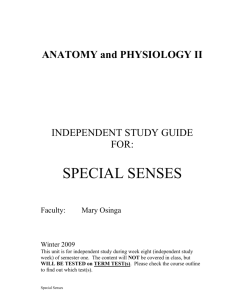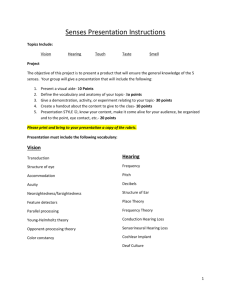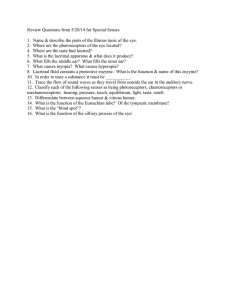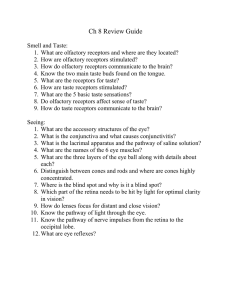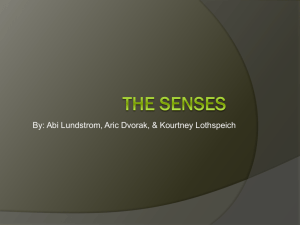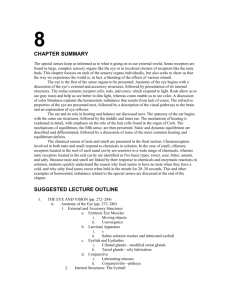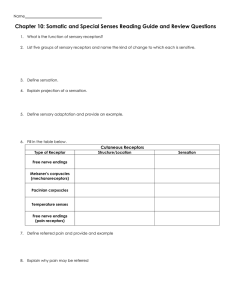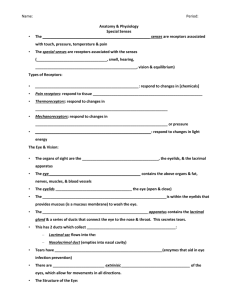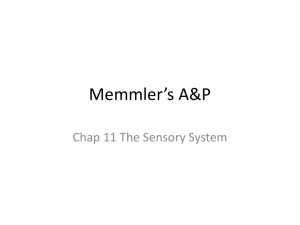Chapter 8 Objectives: Special Senses
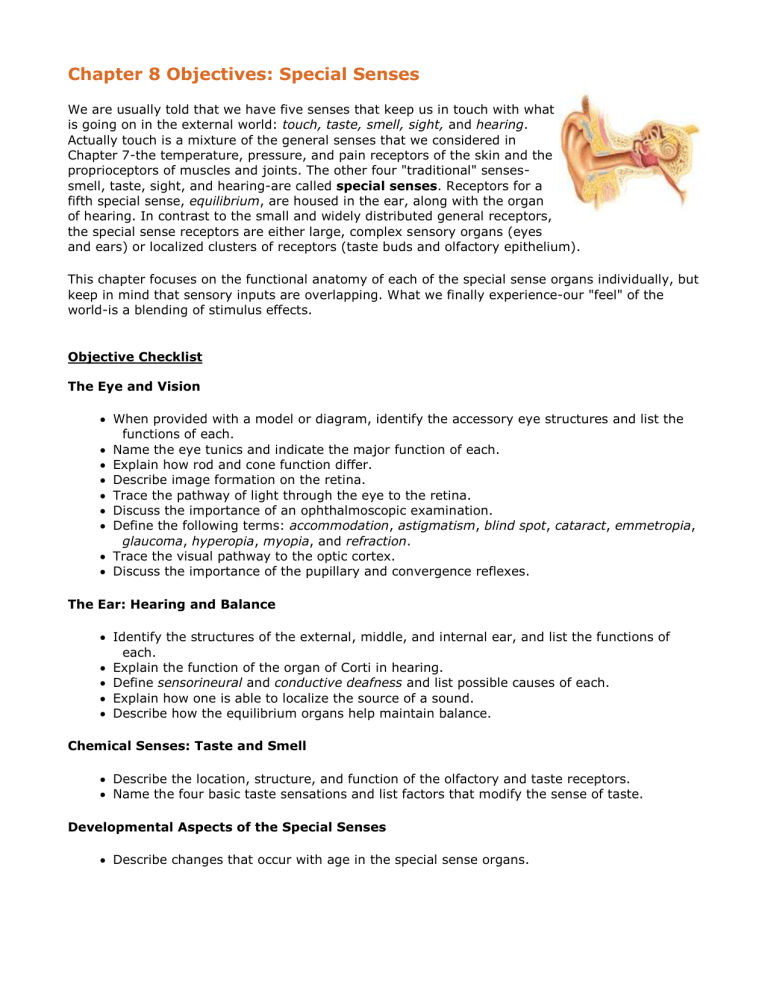
Chapter 8 Objectives: Special Senses
We are usually told that we have five senses that keep us in touch with what is going on in the external world: touch, taste, smell, sight, and hearing.
Actually touch is a mixture of the general senses that we considered in
Chapter 7-the temperature, pressure, and pain receptors of the skin and the proprioceptors of muscles and joints. The other four "traditional" sensessmell, taste, sight, and hearing-are called special senses. Receptors for a fifth special sense, equilibrium, are housed in the ear, along with the organ of hearing. In contrast to the small and widely distributed general receptors, the special sense receptors are either large, complex sensory organs (eyes and ears) or localized clusters of receptors (taste buds and olfactory epithelium).
This chapter focuses on the functional anatomy of each of the special sense organs individually, but keep in mind that sensory inputs are overlapping. What we finally experience-our "feel" of the world-is a blending of stimulus effects.
Objective Checklist
The Eye and Vision
When provided with a model or diagram, identify the accessory eye structures and list the functions of each.
Name the eye tunics and indicate the major function of each.
Explain how rod and cone function differ.
Describe image formation on the retina.
Trace the pathway of light through the eye to the retina.
Discuss the importance of an ophthalmoscopic examination.
Define the following terms: accommodation, astigmatism, blind spot, cataract, emmetropia,
glaucoma, hyperopia, myopia, and refraction.
Trace the visual pathway to the optic cortex.
Discuss the importance of the pupillary and convergence reflexes.
The Ear: Hearing and Balance
Identify the structures of the external, middle, and internal ear, and list the functions of each.
Explain the function of the organ of Corti in hearing.
Define sensorineural and conductive deafness and list possible causes of each.
Explain how one is able to localize the source of a sound.
Describe how the equilibrium organs help maintain balance.
Chemical Senses: Taste and Smell
Describe the location, structure, and function of the olfactory and taste receptors.
Name the four basic taste sensations and list factors that modify the sense of taste.
Developmental Aspects of the Special Senses
Describe changes that occur with age in the special sense organs.

